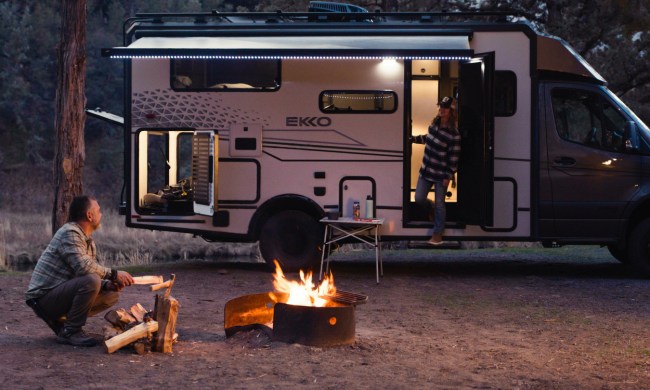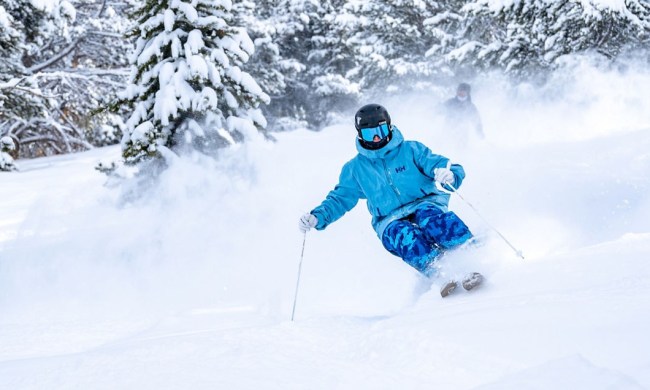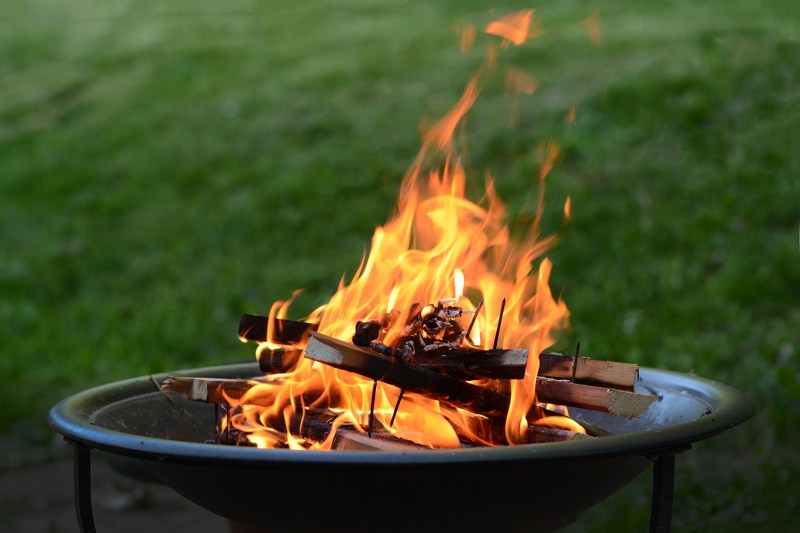
The type of fire pit you’d like to have in your backyard largely depends on the style you wish to have. However, the amount of time and money you are willing to dedicate to the project are also constraints to what can be achieved. Whether you’d like to outfit your space within a few hours or over a weekend, it’s possible to find yourself enjoying your own handiwork in less time than you might expect.
With a little planning and heavy lifting, you can soon raise a toast, roast hot dogs and marshmallows, or simply relax next to the warm fire with your backyard fire pit. So, devise how much you would like to spend and how much time you have to make your fire pit dreams happen, then dig into one of these methods of building a fire pit. Keep reading and learn how to build a fire pit.
Easy assembly fire pits
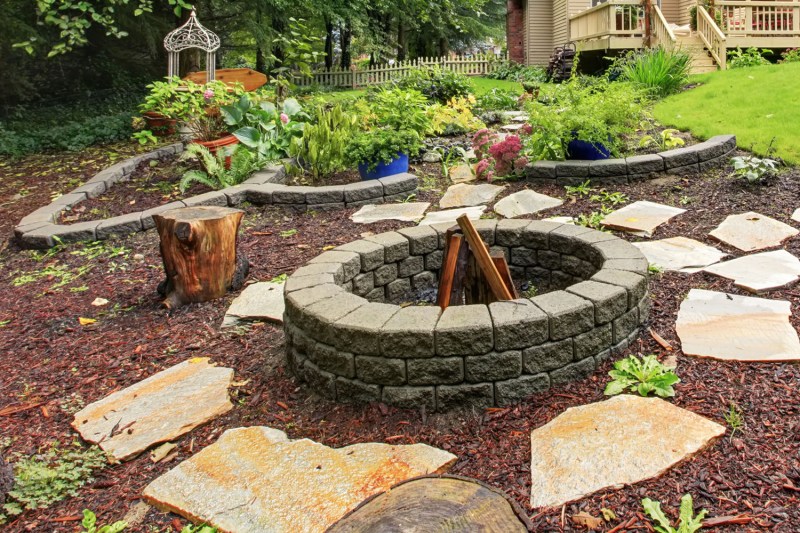
The first kind of fire pit to consider for your backyard is easy to assemble, and you can purchase the materials from most home renovation stores for around $200 or less. For most do-it-yourself fire pits, you’ll only need to choose and buy the stones you want to use for the pit, as well as some small river stones and possibly a level. You can choose from materials like cement wall blocks, pavers, retaining blocks, or even a metal planter. Once you have selected your materials, you can begin to construct the base of the fire pit.
Step 1: For this type of fire pit, you can simply place a layer of the blocks in a circle that’s the entire size or circumference of the fire pit that you’d like.
Step 2: Continue to stack layers of the materials on top of the base until the fire pit is the preferred height.
Note: Throughout the building process, use the level to check that the fire pit is not sloping.
Step 3: Once the walls are constructed, use a shovel or gardening hoe to clear a small perimeter around the fire pit — 3 to 4 inches should be plenty. You can also spray the cleared area with a weed killer to keep the fire pit clear.
Step 4: Finally, complete the fire pit by pouring a shallow layer of river stones at the bottom of the fire pit and around the exterior of its walls. If you prefer, you can lay a single layer of concrete blocks for the bottom instead. The best part is that you can have this type of fire pit complete within a few hours.
Construct a long-lasting fire pit
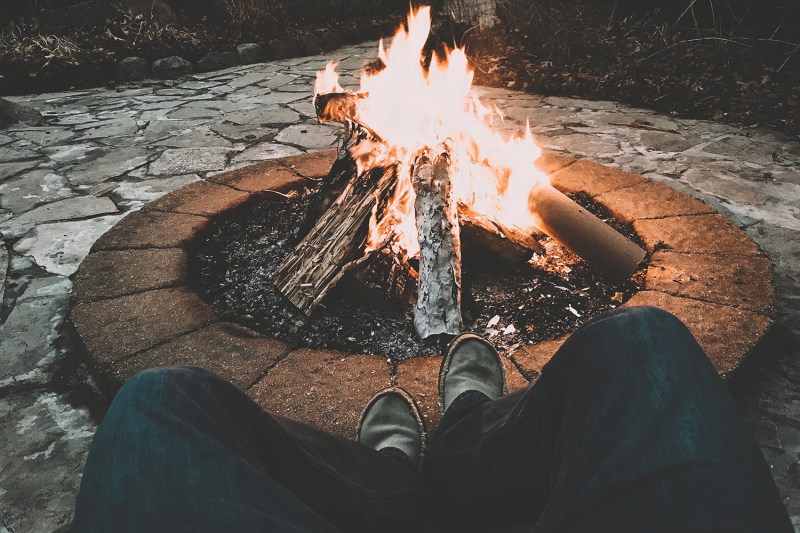
For those hoping to construct a fire pit that will endure and hold up for the long term, there are a few extra steps you can take to build a heavy-duty fire pit. This version is more physically demanding, takes at least two days, and costs several hundred dollars to build. However, the resulting fire pit is one that will endure and that you should be proud of.
Step 1: To begin, this fire pit requires laying the fire pit’s materials where you would like them to go, and then using a shovel to mark the outer edge of the fire pit.
Step 2: Remove the materials and dig a level hole the size of the fire pit that is a full 1 foot deep.
Step 3: Dig another 6 inches down around the perimeter of the fire pit’s hole where the blocks will lay.
Step 4: Fill the 6-inch trench with gravel and pack it down firmly.
Step 5: Next, lay the first layer of blocks and check to see if they are level. If they are level, use caulk between the layers to glue the walls’ layers of blocks together.
Step 6: Once the blocks are flush with the ground, fill with gravel. The gravel will act as drainage for the fire pit.
Step 7: Continue to build up the walls until the fire pit is the correct height. If you would like, you can affix a steel campfire ring around the bottom layer of the wall just above the gravel. You can also finish off the top of the fire pit with another kind of stone for a polished look or add a grate.
Buy a pre-made fire pit

Finally, the last type of fire pit you might want to consider is a kit. Fire pit kits tend to be rather pricey, though they are less expensive than having a professional landscaper outfit your outdoor area. You can shop for a wide range of fire pit kits and pre-assembled fire pits at home improvement stores such as Lowe’s, Home Depot, and Belgard. All have a good selection, with a range of styles and materials. You can also choose between fire pits with grates or without. S & S Fire Pit is another good option for those looking for something more elevated, thanks to the carbon steel exteriors.
No matter where you choose to shop for a prefabricated fire pit or a kit, these options will be more expensive, but they will be easier to assemble or set up for immediate use.
Food ideas for your backyard fire pit
After you have your fire pit, then it’s time to invite your friends over and have some eats. Your backyard fire pit opens up a world of culinary possibilities beyond the classic s’mores. Here are some ideas for fire pit cooking.
- Grilled skewers: Thread your favorite vegetables, meats, or even fruits onto skewers and roast them over the fire. Popular options include bell peppers, onions, mushrooms, sausages, chicken, shrimp, and pineapple chunks.
- Nachos: Yes, that’s right. Assemble your nachos with tortilla chips, cheese, salsa, and any other toppings you like in a foil pan. Heat it up over the fire until the cheese is melted and bubbly.
- Burgers: Give your classic burgers a smoky twist by cooking them over the fire pit. Use a cast iron grill or grate for even cooking.
- Foil packet dinners: This is a mess-free way to cook various meals in your fire pit. Simply wrap your ingredients, like chicken, fish, vegetables, and starches in aluminum foil packets and toss them over the fire.
- S’mores variations: Spruce up this classic campfire treat with different chocolate options, cookie bases, or even fruit fillings.
So, consider which type of fire pit best suits your needs before diving into a project. Whichever style of fire pit you decide to build, remember to avoid common mistakes. According to Earth Turf Wood, the biggest mistake people make when building or installing a fire pit is using materials that won’t be able to stand up to the heat of the fire itself. Another mistake to avoid is building before checking with local ordinances or homeowners associations. Otherwise, you should be able to construct and enjoy your fire pit in no time.

